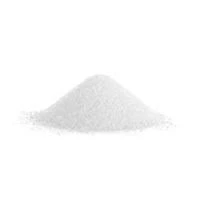
Understanding Common Food Additives and Their Effects on Health
Understanding Common Additives in Food Products
In our fast-paced modern world, packaged and processed foods have become a staple in our diets. Whether it’s a quick snack or an elaborate meal, many food products contain a variety of ingredients intended to enhance their flavor, texture, shelf life, or appearance. These ingredients, known as additives, serve crucial roles in food production and can be broadly categorized into several types. This article will explore some common additives, their purposes, and potential health implications.
Types of Food Additives
1. Preservatives These substances are added to food to prevent spoilage caused by microbial growth or chemical changes. Common preservatives include sodium benzoate, potassium sorbate, and sulfites. While they effectively extend the shelf life of foods, some individuals may experience allergic reactions or sensitivities to certain preservatives. For instance, sulfites are known to trigger asthmatic reactions in susceptible individuals.
2. Flavor Enhancers Flavor enhancers, such as monosodium glutamate (MSG) and disodium guanylate, are added to foods to improve their taste without significantly altering their inherent flavor. MSG, in particular, has been subject to public scrutiny and debate regarding its safety and potential health effects, although research has generally found it to be safe for the majority of the population in reasonable quantities.
3. Color Additives These are synthetic or natural substances used to enhance or restore color to food products. Common color additives include Red 40, Yellow 5, and beet juice powder. While they make food visually appealing, some synthetic colorants have been linked to hyperactivity in children and other adverse effects. Many manufacturers are now shifting towards natural colorants in response to consumer demand for healthier options.
common additives

4. Emulsifiers and Stabilizers Emulsifiers, like lecithin and mono- and diglycerides, help blend ingredients that typically don’t mix well, such as oil and water. Stabilizers, such as guar gum and carrageenan, help maintain the texture of food products, preventing separation and settling. These additives are generally regarded as safe; however, excessive consumption of certain stabilizers may lead to digestive issues for some individuals.
5. Sweeteners Both natural and artificial sweeteners are commonly used in food products. Sucrose, corn syrup, stevia, and aspartame are some examples. While sweeteners can offer a means to reduce calorie intake, there is ongoing debate regarding the long-term health effects of artificial sweeteners. Some studies suggest a potential link to metabolic disorders, though research is still inconclusive.
6. Nutritional Additives In an effort to fortify foods and enhance their nutritional value, many manufacturers add vitamins and minerals to their products. This practice can help combat deficiencies in populations that may lack certain nutrients in their diet. However, it’s essential to balance fortified foods with whole foods to ensure a well-rounded intake of nutrients.
Conclusion
While food additives play significant roles in the production and preservation of food, their use is often met with skepticism and concern among consumers. Understanding the purposes and potential health effects of these common additives is crucial for making informed dietary choices. As consumer awareness grows, many brands are reformulating their products to reduce or eliminate controversial additives, opting for transparency and natural ingredients. Ultimately, educating ourselves on food additives allows us to take control of our diet and health, empowering us to choose products that align with our values and wellness goals.
-
Understanding Synthetic Rubber OptionsNewsApr.27,2025
-
Trichloroisocyanuric Acid: Essential for Clean and Safe WaterNewsApr.27,2025
-
Sodium Dichloroisocyanurate: Key to Safe Water TreatmentNewsApr.27,2025
-
Sodium Acid Pyrophosphate: Essential in Modern Food ProcessingNewsApr.27,2025
-
Essential Water Treatment ChemicalsNewsApr.27,2025
-
Denatured Alcohol and Its Industrial UsesNewsApr.27,2025
-
The Versatile Uses of Sodium BicarbonateNewsApr.24,2025
Hebei Tenger Chemical Technology Co., Ltd. focuses on the chemical industry and is committed to the export service of chemical raw materials.
-

view more DiethanolisopropanolamineIn the ever-growing field of chemical solutions, diethanolisopropanolamine (DEIPA) stands out as a versatile and important compound. Due to its unique chemical structure and properties, DEIPA is of interest to various industries including construction, personal care, and agriculture. -

view more TriisopropanolamineTriisopropanolamine (TIPA) alkanol amine substance, is a kind of alcohol amine compound with amino and alcohol hydroxyl, and because of its molecules contains both amino and hydroxyl. -

view more Tetramethyl Thiuram DisulfideTetramethyl thiuram disulfide, also known as TMTD, is a white to light-yellow powder with a distinct sulfur-like odor. It is soluble in organic solvents such as benzene, acetone, and ethyl acetate, making it highly versatile for use in different formulations. TMTD is known for its excellent vulcanization acceleration properties, which makes it a key ingredient in the production of rubber products. Additionally, it acts as an effective fungicide and bactericide, making it valuable in agricultural applications. Its high purity and stability ensure consistent performance, making it a preferred choice for manufacturers across various industries.











